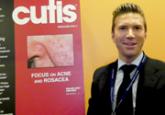Commentary
Challenges Facing Our Specialty
The health care environment is changing rapidly and the smart dermatologist will stay informed and respond proactively. Where will dermatology fit...
Daniela Kulichová, MD; Jana Dáňová, MD, PhD; Christian Kunte, MD; Thomas Ruzicka, MD; Alexander Martin Čelko, MD, PhD
Drs. Kulichová, Kunte, and Ruzicka are from the Department of Dermatology and Allergology, Ludwig Maximilian University, Munich, Germany. Dr. Kulichová also is from and Drs. Dáňová and Čelko are from Third Faculty of Medicine, Charles University, Prague, Czech Republic.
The authors report no conflict of interest.
Correspondence: Daniela Kulichová, MD, Department of Dermatology and Allergology, Ludwig Maximilian University, Frauenlobstrasse 9-11, 80337 Munich, Germany (Daniela.Kulichova@med.uni-muenchen.de).

Biological Model
Eye color and Fitzpatrick skin type were the focus of the biological model. The odds of being diagnosed with melanoma were 2.5 times greater in respondents with a light eye color (ie, blue, green, gray) than in respondents with a dark eye color (ie, brown, black). Respondents with Fitzpatrick skin types I and II had a significantly higher association with melanoma (OR, 4.25 and 6.98; 95% CI, 2.13-8.51 and 3.78-12.88) than Fitzpatrick skin type III (OR, 1.0)(P<.001 for both). Respondents with darker skin types (IV and V) also were present in our study population. The numbers were low, and the CI was too wide; nevertheless, the results were statistically significant (P<.001).
Lifestyle Model
The lifestyle model included patients’ use of sunscreen and level of sun exposure at work and on vacation. Respondents who did not use sunscreen were 12 times more likely to develop melanoma than those who always used it (95% CI, 5.56-27.14); however, individuals who used sunscreen always and repetitively (ie, more than once during 1 period of sun exposure) had a higher likelihood of melanoma compared to those who always used it. The incidence of melanoma was lower in respondents who regularly spent their vacations by the sea than those who did not vacation in seaside regions. Respondents who worked in direct sunlight were approximately 2 times more likely to present with melanoma than individuals who did not work outside.
Exposure Model
The number of sunburns sustained during childhood and adolescence was assessed in the exposure model. Respondents with a history of 1 to 5 sunburns during childhood and adolescence did not show a statistically significant increase in the incidence of melanoma diagnosis; however, those with a history of 6 or more sunburns during these periods showed a significant increase in the odds of developing melanoma (OR, 4.95 and 25.52; 95% CI, 2.29-10.71 and 12.16-53.54)(P<.001 for both).
The health care environment is changing rapidly and the smart dermatologist will stay informed and respond proactively. Where will dermatology fit...
Primary malignant melanoma (PMM) of the penis is rare. However, regression of PMM is not rare. The authors report a case of complete clinical...

An important topic at the 2014 Summer AAD Meeting in Chicago, Illinois, was the nonsurgical treatment of skin cancers, including adjuvant therapy...
